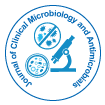

Review - (2021)Volume 5, Issue 2
These incorporate two genera, Rickettsia and Orientia. Serology has been customarily the pillar of finding, albeit this has been restricted by cross-responses among firmly related individuals and reduced affectability/utility in the intense period of disease. Different methods, for example, nucleic corrosive enhancement tests utilizing blood examples or tissue swabs/biopsy examples, sequencing, and mass spectrometry, have arisen as of late for both microorganism and vector distinguishing proof. This paper gives a succinct survey of the rickettsioses and the conventional and more current advancements accessible for their conclusion.
Orientia; Rickettsia; Diagnostics; Rickettsioses; Scrub typhus; Spotted fever; Vector-borne diseases
This increment can be ascribed to the appearance of sub-atomic methods over the most recent thirty years and the huge decreases in cost related with using the new sub-atomic apparatuses. The individuals from the class Rickettsia are generally described into two principle gatherings, the spotted fever bunch (SFG) and the typhus bunch (TG), with the greater part of the realized species having a place with the SFG. Two species, Rickettsia typhi and Rickettsia prowazekii, make up the TG. Arrangement into the two gatherings was generally founded on their physiological qualities of intracellular confinement, ideal development temperature, and cross-response of serum from a contaminated patient with physical antigens of three strains of Proteus [1].
Epidemiology and Transmission
These two types of Rickettsia are sent by bugs, going astray altogether from most rickettsiae that require a tick vector, which will in general be restricted to the topographical dissemination of the ticks. Different vectors that are known to hold onto and send rickettsiae are vermin (Rickettsia Akari) and lice (Rickettsia prowazekii) . Rickettsia felis has been found in nonhematophagous arthropods, like booklice.
Arthropod Vectors and Identification
The test to this is that ordered keys are explicit to types of arthropods as per the district where they are found. The coming of sub-atomic strategies gives an option in contrast to distinguishing arthropods. This strategy takes into account the distinguishing proof of tick species by investigation of submitted groupings of Ixodida 16S rRNA, 12S, inside deciphered spacer 2 (ITS2), and cytochrome oxidase I (COI) qualities [2].
Virulence, Pathogenesis, and Clinical Presentation
One of the primary pathologies of rickettsial disease is expanded vascular penetrability connected to bacterial burden and cancer corruption factor-α disturbing endothelial cell intersections of little to-medium-sized veins. Limited rickettsial disease might present as an eschar ("tache noir") at the site of arthropod immunization, and a more powerful response is believed to be identified with the nearby control of contamination [3].
Serology
The transformation of current serological strategies for rickettsial determination (immunofluorescence) expanded analytic precision altogether and was considered the best quality level before the wide acknowledgment of sub-atomic testing. Serological testing is as yet being directed in numerous labs worldwide because of the fast turnaround time and the requirement for insignificant example arrangement. They come in many structures, like dipsticks, compound connected immunosorbent measure (ELISA) packs, and immunofluorescence tests [4].
Right now, nonetheless, atomic measures are generally presented in reference research centers as lab created tests, likewise with the case with culture. Further work in further developing serologic diagnostics incorporates growing more explicit boards to rickettsioses found in various geographic areas and working on the presentation of non-reference (however more available) serologic strategies, for example, ELISA and quick antigen tests for Rickettsia species. Aside from recognizable proof by means of conventional ordered keys, MALDI-TOF MS and atomic techniques address fresher and more target strategies for vector ID.
Citation: Lin S (2021) A Review of the Epidemiology and Diagnostics of Parasitic Bacteria and Orientia Family. J Clin Microbiol Antimicrob 5:114
Received: 08-Sep-2021 Accepted: 20-Sep-2021 Published: 29-Sep-2021 , DOI: 10.35248/jcma.21.5.114
Copyright: © 2021 Lin S. This is an open-access article distributed under the terms of the Creative Commons Attribution License, which permits unrestricted use, distribution, and reproduction in any medium, provided the original author and source are credited.